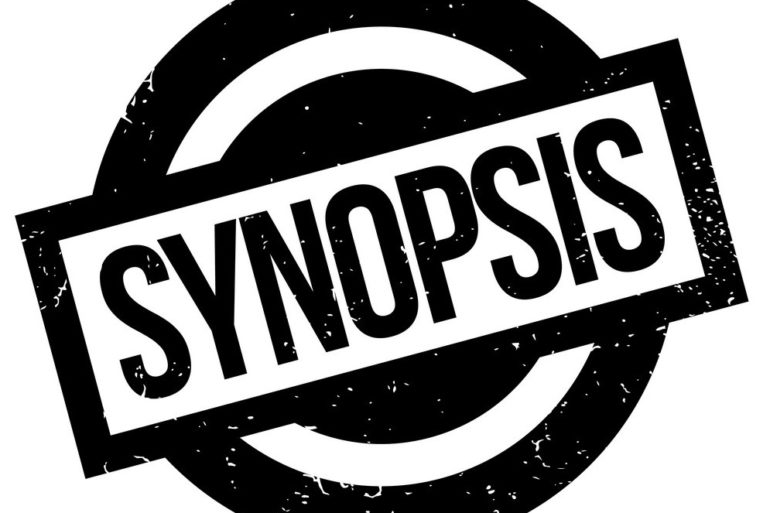How to write a Synopsis?
Are you a writer working on the synopsis of your book right now? Writing a synopsis can be both challenging and exciting.
Synopsis can be useful for providing an overview when pitching work to agents or publishers. In this article, we’ll cover how to write an effective synopsis. We’ll discuss what should be included and how to concisely communicate the key points of your story. So whether you’re hoping to sell your latest novel or simply want to better understand how to summarize a complex work, read on for our tips on how to write a synopsis.
- What is a synopsis?
- What is the purpose of a synopsis?
- What should be included in a synopsis?
- How to write a synopsis for your novel?
- Steps for writing a synopsis for your novel
- Edit your synopsis for clarity
- Tips for making your synopsis stand out
- Examples of successful synopses
What is a synopsis?
A synopsis is a brief overview of a book, typically covering the plot, characters, and setting. It is often used by publishers to assess whether a book is worth publishing, and by readers to decide whether they want to read it. Synopses can also be helpful for writers themselves, as they can give a clear overview of what has been written so far and what still needs to be done.
It can be helpful to think of the synopsis as a movie trailer. You want to tease the reader with enough information to make them want to read the book, without giving away too much.
When writing a synopsis, it’s important to keep in mind that you are summarizing an entire novel, not just one or two scenes. You need to capture the essence of the story while still leaving room for suspense and intrigue.
Start your synopsis with the basics of what the story is about and what makes it unique. Then, flesh out the details of the plot, introducing the main characters and their arcs. Finally, hint at the ending without giving too much away. With practice, writing a synopsis will become easier and more natural. And who knows – your synopsis might just be the key to getting your book published!
What is the purpose of a synopsis?
Now that we have answered what is a synopsis, we need to look at what purpose the synopsis serves. In the publishing industry, a synopsis is typically submitted along with a writer’s proposal when seeking a literary agent or publisher. Synopses are used by readers to know what the book is about and decide if they want to read it. Synopses can also be helpful for writers themselves, as they force you to distill your story down to its essence and clearly articulate what the plot is and what happens along the way.

There are two main purposes of a synopsis: to sell your story to an agent or editor and to help you plan and structure your writing project. In order to do both of these things effectively, it’s important to understand what should (and shouldn’t) be included in a synopsis.
The first purpose of a synopsis is to sell your story. This means that you need to make your synopsis as engaging and impactful as possible. The best way to do this is by including the most important plot points, without getting bogged down in too much detail. You want to give the reader a clear sense of what the story is about and what happens along the way, without giving away too much. This can be tricky, but it’s important to remember that your goal is not to tell the whole story in the synopsis – just enough to pique someone’s interest and make them want to read more.
The second purpose of a synopsis is to help you plan and structure your writing project. This means that you need to include all of the key elements of your story, in order: beginning, middle, and end. You also need to make sure that each scene moves the story forward and furthers the plot.
This can be helpful when you’re starting to write, as it can give you a roadmap to follow. It can be of valuable help if you get stuck while writing, as it can remind you what needs to happen next in order to keep the story moving forward.
As you can see, there are two very different purposes for a synopsis – one for writers and one for readers (or potential publishers). Keep these purposes in mind when writing your own synopsis, and make sure that you include all of the necessary information.
What should be included in a synopsis?
When you have addressed what is a synopsis and are ready to write a synopsis, you should first understand what each component entails. The thematic aspects of your writing are the universal truths or lessons that you want your reader to take away from your story. In order to effectively communicate these themes, you need to be clear about what they are and how they are woven into the fabric of your story.
The summary of your entire story should be included in your synopsis. This will give the reader a general overview of what happens in your story. When summarizing your story, be sure to include the main conflict and how it is resolved.

Your writing style should be taken into account when crafting a synopsis. Your synopsis is an opportunity to showcase your writing style to potential readers or publishers. Be sure to include any unique elements of your writing that will give the reader a taste of what it is like to read your work.
Lastly, the narrative arc of your story should be included in the synopsis. This refers to the overall structure of your story and how the conflict is resolved. When outlining the narrative arc, be sure to hit on the major plot points so that the reader gets a sense of how the story builds and comes to a close.
Including these elements in your synopsis will give the reader a comprehensive look at what your story is about and what they can expect from reading it. Taking the time to craft a well-rounded synopsis will ultimately help you attract more interest in your work.
How to write a synopsis for your novel?
Writing a synopsis for a novel can be a daunting task, but it doesn’t have to be.
Steps for writing your synopsis
By following a few simple steps, you can quickly and easily create a synopsis that will give your readers all the information they need to know about your book.
Offer an overview
The first step is to decide what information you want to include in your synopsis. A good synopsis will provide an overview of the plot, the main characters, and the setting. You should also include any major themes or ideas that are central to the story. Once you know what you want to include, you can start writing your synopsis.
Introduce your characters and the conflict
Begin by introducing the novel’s main characters and conflict. Introduce the reader to the world in which your story takes place, and provide enough detail to give them a sense of what it is like.
Unravel your plot and offer a resolution
Start moving through the plot, hitting all of the major points along the way. Be sure to wrap up with a resolution to the conflict, and leave the reader wanting more.
By following these steps, you can easily write a synopsis for your novel that will engage and inform your readers.
Edit your synopsis for clarity
When you are editing a synopsis it’s important to take the time to make sure your synopsis is clear and concise.
Steps to edit your synopsis
- First, read your synopsis aloud. This will help you catch any awkward phrasing or wording.
- Next, have someone else read your synopsis and give you feedback. It can be helpful to get an outsider’s perspective on your work.
- Once you’ve made any necessary changes read your synopsis one more time to make sure it flows smoothly.
- Finally, ask yourself if your synopsis accurately reflects the story you’re trying to tell. If not, make additional changes as needed.
Getting feedback from your trusted friends can help enhance the quality of your synopsis. Asking for feedback can be difficult, but it’s worth it to get an objective opinion on your work.

If you’re not sure how to start, try asking specific questions about what works and what doesn’t work in your synopsis. Your friends’ feedback will help you create a stronger and more effective piece of writing.
Tips for making your synopsis stand out
One of the most important steps in making your synopsis stand out is to ensure that it accurately reflects your writing style. After all, your synopsis is effectively a sales pitch for your book, and potential readers will want to know if your writing is something that they will enjoy. One way to do this is to focus on highlighting your story’s unique voice. Are you writing in a playful, light-hearted style? Or are you taking a more serious, thoughtful approach to the synopsis? Whatever your tone, make sure that it comes through loud and clear in your synopsis.
In addition to highlighting your writing style in the synopsis, it’s also important to focus on your story’s plot twist. This is what will set your book apart from all the others on the shelves, so it’s essential that you make it clear in your synopsis. Just be careful not to give too much away – a good plot twist should be tantalizing and mysterious, leaving potential readers wanting more. With these steps in mind, you can be sure that your synopsis will be as unique as your book.
Examples of successful synopses
So how can you make sure your synopsis is up to par? One way is to study examples of well-written synopses. To get you started, here are three examples of popular literary works with great synopses:
In “The Catcher in the Rye,” 16-year-old Holden Caulfield is discharged from an institution in California and intends to go live with his brother in New York City. During his journey, Holden becomes increasingly frustrated with the ‘phoniness’ of the world around him. This coming-of-age novel deals with themes of innocence, angst, and rebellion.
“To Kill a Mockingbird” by Harper Lee is set in the fictional town of Maycomb during the 1930s. The novel centers on Atticus Finch, a white lawyer who defends a black man accused of rape. The story highlights the racial tensions of the time period, as well as the importance of morals and integrity.
“The Great Gatsby” by F. Scott Fitzgerald tells the story of Jay Gatsby, a wealthy man who throws lavish parties in an attempt to win over his former love, Daisy Buchanan. Set against the backdrop of the Roaring Twenties, this novel explores issues of love, wealth, and status.
As you can see from these examples, a good synopsis will give a brief overview of the plot while also touching on some of the key themes and ideas explored in the work. So next time you’re working on a synopsis, keep these examples in mind – and don’t be afraid to ask for help if you’re struggling. After all, your synopsis is important – it could be the difference between getting published or not.

